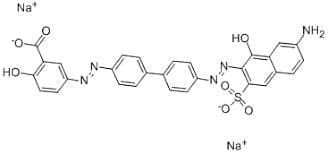Introduction:
A dye is a colored complex, usually utilized in a mixture, which is efficient of being rooted into a fabric. The dyestuff should possess a good fastness property so that the color will not wash with soap and water or vanish when exposed to daylight etc. Dyeing is generally settled in a unique solution accommodating dyestuff and chemical matter. After dyeing, dyestuff particles have a fixed chemical bond with yarn. Time & temperature management are the key elements in dyeing. There are varieties of dyestuffs available in the market.
Dye:
“A complex accommodating chromophore and autochrome categories are known as a dye. The chromophore group oversees dye color because of its saturation. Autochrome group is accountable for dyestuff & yarn reaction.
Distinctive types of dyestuffs
Dyestuff molecules can be categorized based on several boundaries.
Based on the Source
- Natural dyes
- Synthetic dyes
Based on Ionic Nature
- Anionic dyes: Reactive dye, acid dye, etc.
- Cationic dyes: Basic dye.
- Non-ionic dyes: Disperse dye.
Based on Chromophore Groups
- Azoic colors
Natural dye:
Dyestuffs are obtained from natural sources. These are termed natural dyes. These are often negatively charged These are materials extracted from natural sources.
While it was the main supply of dyes from antiquity, they are largely restored by artificial dyes, which are generally more reliable, less expensive, and can be afforded. Natural dyes in use comprise hematoxylin, carmine, orcein.
These dyes can be used on the following fabrics: Cotton, Linen, Wool, Silk, Nylon, Polyester.

Chemical structure of Natural dye
Synthetic dye:

Dyes obtained from natural or artificial blends are called synthetic dyes. Examples of this category of dyestuff are Direct, Acid, Basic, Reactive dye, Mordant, Metal complex, Vat, Sulfur, Disperse dye, etc. Synthetic dyes rapidly restored the habitual natural dyes.
These dyes can be used on the following fabrics: Cellulosic, Wool, and Silk.
Direct Dye:
This dyestuff can be applied directly on the cellulosic fiber as they have a strong affinity towards cellulosic materials. Mainly these dyestuffs are sodium salts of sulphonic acid or carboxylic acid, and their dominant chromophore group is the azo group.

Chemical structure of Direct dye
Properties of Direct Dyes:
1.They are water-soluble and anionic.
2.They have a strong affinity towards cellulosic fibers
3.They have a poor washing & light fastness
4.Required dyebath temperature (60-80) degrees.
These dyes can be used on the following fabrics: Cellulosic fabrics such as Rayon, Silk, & Wool.
Reactive Dyes
 Reactive dyes contain a halogen reactive group in their structure and become an essential part of the filament structure a covalent bond. This dyestuff is primarily used for dyeing cotton materials.
Reactive dyes contain a halogen reactive group in their structure and become an essential part of the filament structure a covalent bond. This dyestuff is primarily used for dyeing cotton materials.
Properties of Reactive Dyes
1.These are water-soluble and anionic
2.Show good washing and lightfastness and average rubbing fastness
3.Get attached to the fiber by a covalent bond
4.Required dyebath temperature (72-93) degrees.
These dyes can be used on the following fabrics: Cotton and other Cellulose fibers.

Chemical structure of Reactive dye
Acid dye:
 The implementation of acid dyes requires an acidic bath. They are mainly carboxylic or sulphuric acid salts. Acid dyes are particularly used for dyeing protein fibers.
The implementation of acid dyes requires an acidic bath. They are mainly carboxylic or sulphuric acid salts. Acid dyes are particularly used for dyeing protein fibers.
Properties of Acid Dyes
1.They are highly water-soluble.
2.They have an affinity towards polyamide and protein fibers.
3.They show poor wash fastness, yet the lightfastness is excellent.
4.Required dyebath temperature (190-212) degrees
These dyes can be used on the following fabrics: Protein fibers, i.e., animal hair fibers like Silk, Wool, Alpaca, and Mohair.

Chemical structure of an Acid dye
Basic Dye:
 These are salts of natural bases. The cationic group of the dye structure is in charge of color production.
These are salts of natural bases. The cationic group of the dye structure is in charge of color production.
Properties of Basic Dyes
1.They are cationic dyes.
2.Soluble in alcohol and methylated spirit, non-soluble in water.
3.They are highly relevant for jute and acrylic.
4.They show average to good fastness properties.
5.Required dyebath temperature (about 60 degrees C., or 140 F.)
These dyes can be used on the following fabrics: Jute, Acrylic & Wool fiber, etc.

Chemical structure of Basic dye
Disperse Dye:
These are water-soluble dyes utilized for dyeing hydrophobic thermoplastic filaments. They are particularly switched azo, anthraquinone, or diphenylamine compounds.
Properties of Disperse Dyes
1.They are non-ionic and sparingly water-soluble, have low molecular weight.
2.The dispersing agent is essential for building dispersed in water.
3.They are created in powdered and liquid forms.
4.Required dyebath temperature (50-60) degrees.
These dyes can be used on the following fabrics: Nylon, Polyester, and other Synthetic fibers.

Chemical structure of Disperse dye
Azoic color:
These are di-azo water-insoluble coloring compounds. They need coupling elements for making colors. These are not ready-to-use colors like other dyestuffs.
Properties of Azoic Dyes
1.They show exceptional light & washing fastness.
2.They have an insoluble azo group found in their structure and are not water-soluble.
3.Two baths are required i.e a developing tub and an impregnation tub.
These dyes can be used on the following fabrics: Cotton, Silk & Viscose Rayon.

Chemical structure of Azoic color
Conclusion:
The dyeing procedure is a key element in the victorious buying and selling of fabric merchandise. With time, dyeing techniques are not changed. Fundamentally water is used to dye, clean, and for application of chemicals on textiles, and additionally to rinse the colored yarns or fabrics.
Reference:
- https://textiletuts.com/types-of-dyes/
- https://textilelearner.net/different-types-of-dyes-with-chemical-structure/
Image source:
- https://5.imimg.com/data5/RD/JF/MY-10893990/multicolor-textile-dyes-500×500.jpg
- https://opimedia.azureedge.net/-/media/Images/MEN/Editorial/Blogs/Organic-Gardening/Grow-Your-Own-Color-Planting-a-Natural-Dye-Garden/natural-dyes.jpg?h=412&w=550&la=en&hash=1A9E1247FF8E8E9A322F8A94EBEA3166CBF5BEDA
- https://www.gardeningknowhow.com/wp-content/uploads/2020/02/easter-eggs-with-natural-dye.jpg
- https://static.chemicalwatch.com/textiles222x140.png
- https://inbali.co/sites/default/files/blog/blog-head-34.jpg
- https://mauvelli.com/wp-content/uploads/2021/02/choice-abundant-alt.jpg
- https://www.designinfo.in/115-medium_default/gloss-fan-deck.jpg


